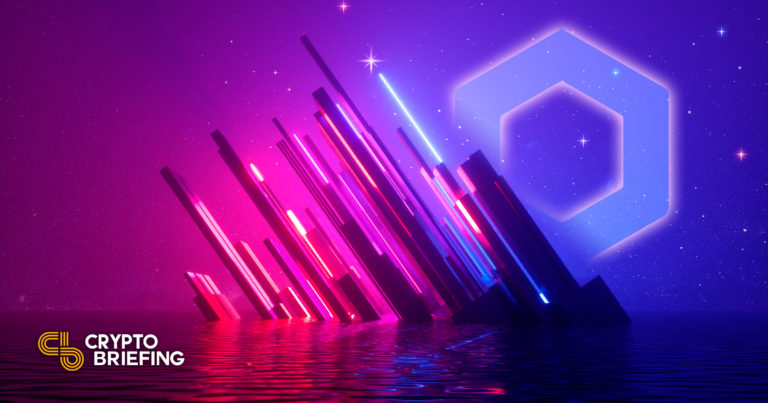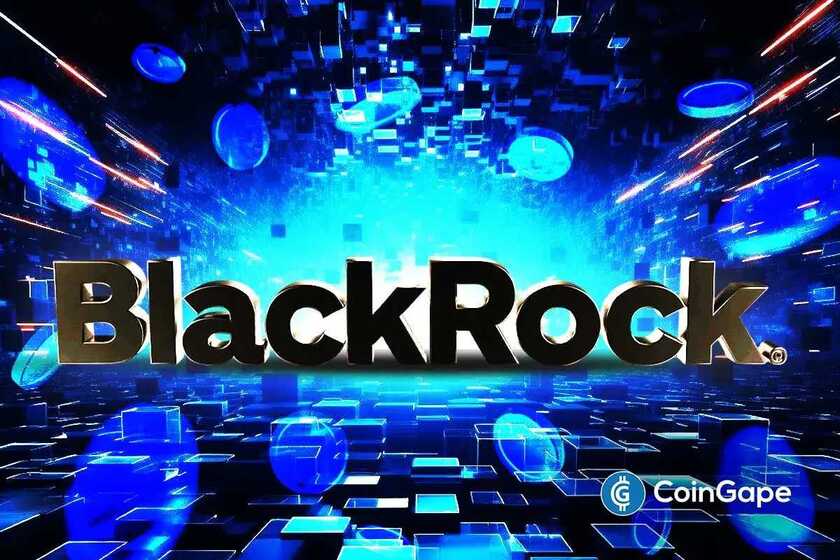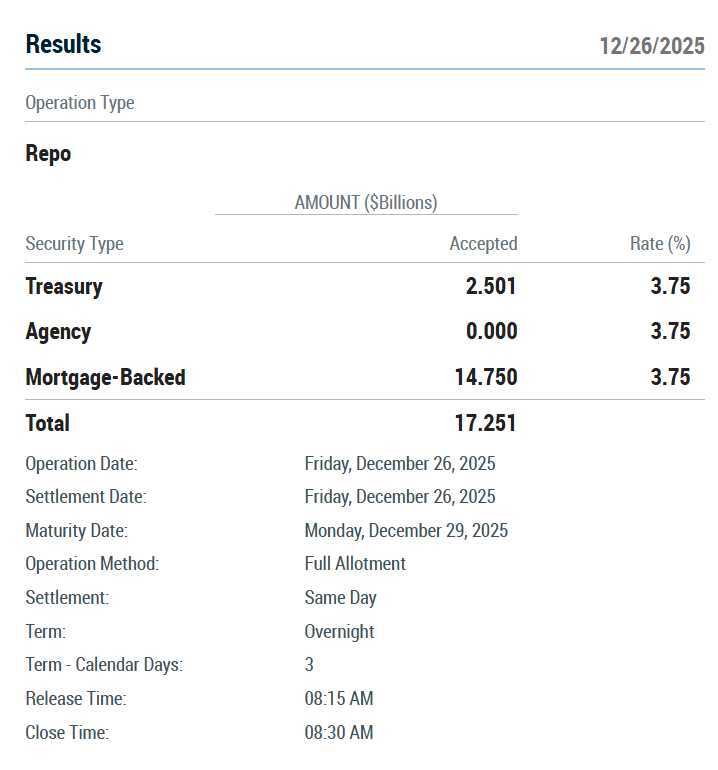Chainlink Staking: A New Chapter in the LINK Economy
With Chainlink token staking set to launch later this year, Crypto Briefing explores how the decentralized oracle network's future will look.
Key Takeaways:
⚈Chainlink is crypto's top decentralized oracle network, known for providing price data to power DeFi applications.
⚈The network is planning to launch a token staking and node delegation system.
⚈The updates could help make Chainlink more secure and decentralized, potentially sparking renewed interest in the project.
Plans to grow Chainlink’s oracle network and shore up its security through a new token staking system could give the project a new lease of life in the second half of 2022.
What Is Chainlink?
Chainlink is a decentralized node network that provides data and information from off-chain sources to blockchain smart contracts via oracles.
When a smart contract needs to source external data, such as Bitcoin’s price in USD, it can request it from Chainlink’s oracle network. When a contract makes a request, eligible oracles provide answers, and then a Chainlink Aggregation Contract takes all the data from the oracles and reconciles it for an accurate result. Oracles are then rewarded with LINK tokens for their efforts. While Chainlink is best known for providing oracle services to decentralized finance protocols that rely on off-chain price feeds, it also provides prompt, accurate off-chain data reports for everything from the SWIFT payment system to AccuWeather.
Currently, only Chainlink oracles run by professional teams of node operators, infrastructure engineers, or companies who build infrastructure exclusively for Chainlink are allowed to provide data feeds and earn LINK. While anybody can start running a node, only those who pass Chainlink’s approval process are tasked with providing data. Subsequently, Chainlink is not as decentralized as blockchains such as Ethereum where anyone with 32 ETH can run a full node and help validate transactions. However, it’s worth noting that Chainlink’s nodes are distributed in data centers across the globe, making the network more resilient than other more centralized oracles.
By reliably connecting data from different off-chain sources to on-chain smart contracts, Chainlink has become an invaluable piece of blockchain infrastructure. According to Defi Llama data, the Chainlink oracle network secures around $15 billion of value across all protocols that use its data feeds. In May 2022, Chainlink co-founder and CEO Sergey Nazarov estimated that Chainlink has at least 60% of the market share in blockchain verticals such as DeFi and gaming.
Despite its position as the leading decentralized oracle network, Chainlink has faced criticism over the security of its oracle’s price feeds. Under the current network setup, there’s no monetary incentive to stop node operators from colluding to feed incorrect oracle answers into blockchain applications that use Chainlink’s price feeds.
Ultimately, the accuracy of Chainlink’s price feeds rests in the hands of its trusted oracles. The network can be attacked if these entities are fed a significant number of false prices from other nodes, compromised, bribed, or made dishonest in some other way. Arcane Assets’ Eric Wall is one of Chainlink’s vocal critics and has previously argued that its security is not “cryptoeconmically secure” as its developers state and instead relies on a trusted system.
Although Chainlink has never been attacked, its reliance on trust and a limited number of nodes may be concerning for large stakeholders, such as those securing billions of dollars worth of assets locked in DeFi protocols. It may only be a matter of time before the incentive to attack Chainlink’s oracle network becomes too big and malicious actors seriously attempt to compromise its data feeds to profit from the ensuing chaos.
LINK Staking
To shore up the security of Chainlink’s oracle network, its developers plan to implement a staking system similar to those found in Proof-of-Stake blockchains. After staking is implemented, nodes will have to lock up LINK tokens as collateral, which can be taxed or “slashed” if a node misreports data. The LINK tokens slashed from dishonest validators will then be redistributed to honest validators.
The network’s crypto economic security should improve once the staking system introduces a penalty for dishonest nodes. The hope is that the cost to attack Chainlink’s price oracles will be greater than the potential profits an attack could generate. In this way, the oracle network would benefit from the same game theory principles that disincentivize malicious actors from attempting to attack blockchains like Bitcoin and Ethereum.
Additionally, staking will also promote community participation in the Chainlink network beyond those able or qualified to run their own nodes. The staking model will allow anyone who holds LINK to delegate their tokens to a trusted node operator. In a June blog post covering the topic, Chainlink’s developers estimated LINK token staking will produce a 5% annual return from a combination of emissions from the treasury reserve and fees paid by those who utilize Chainlink’s data feeds. The end goal is for treasury emissions to end once Chainlink’s use grows, leaving all staking rewards to come from fees paid by oracle users.
The staking system will also increase network security through a new reputation framework. Here, nodes that consistently provide quick and accurate responses to data requests will have their feeds prioritized over less reliable ones. When there is an excess of fast and reliable nodes for a given request, the network will need to look at other metrics to decide which nodes will be used to generate oracle data. In this case, the amount of staked LINK each node has backing their oracle services will also determine if and how often they are chosen to provide data feeds. This helps improve security by aligning the incentives of the node operators with the Chainlink network. Nodes will need to hold a large amount of LINK to be selected to provide data feeds, which should disincentivize them from attacking the network as it would hurt the value of the LINK tokens backing their node.
Combining these two principles should also help create more reliable and secure node operators. As LINK holders who want to delegate their tokens to a node for staking will want to avoid having part of their delegation slashed, the best and most honest validators will likely attract the most tokens from LINK stakers. This should create a feedback loop where fast and accurate validators are consistently selected, increasing the overall reliability and security of the network.
Chainlink aims to release a 0.1 version of its staking system later this year. At first, staking nodes will only provide a price feed for the ETH/USD pair and launch with limited functionality. However, if the 0.1 version launches without any issues, developers will release version 1.0, adding additional functionality such as stake slashing and incorporating user fees into rewards. Further in the future, a full 2.0 version will expand Chainlink staking to other services beyond providing price feeds and introduce loss protection. This service lets sponsors of oracle services buy insurance against losses from oracle networks providing inaccurate data feeds.
The Future of Chainlink
The staking and node delegation launch will mark the start of a new chapter in the LINK token economy. For the first time, LINK will gain additional utility beyond facilitating payments for oracle services. Node operators will be incentivized to lock up their LINK tokens through staking so they can earn a larger portion of treasury emissions and user fees. Additionally, many LINK holders will likely choose to delegate their tokens to nodes to receive staking rewards.
On a longer time scale, LINK staking could act as a form of cash flow revenue for holders. Once the Chainlink treasury has distributed all its reserve tokens, the circulating supply will stop inflating. At that point, staking rewards will solely depend on fees from protocols using the oracle network. Similar to how holding and staking Ethereum after its upcoming network Merge will produce a cash flow based on network usage, LINK stakers will also receive rewards based on the demand for Chainlink’s oracle services.
However, how long it will take for Chainlink to reach this point in its roadmap remains unclear. Despite previously hinting at a late 2022 release for LINK staking, precise details on the system’s implementation, the timeline of token emissions, and deployment of the full 2.0 staking system have been vague. Still, if Chainlink can implement staking and progress toward its 2.0 roadmap, it should benefit from a wave of renewed interest across the cryptocurrency space over the coming months.
https://cryptobriefing.com/chainlink-staking-chapter-link-economy





























